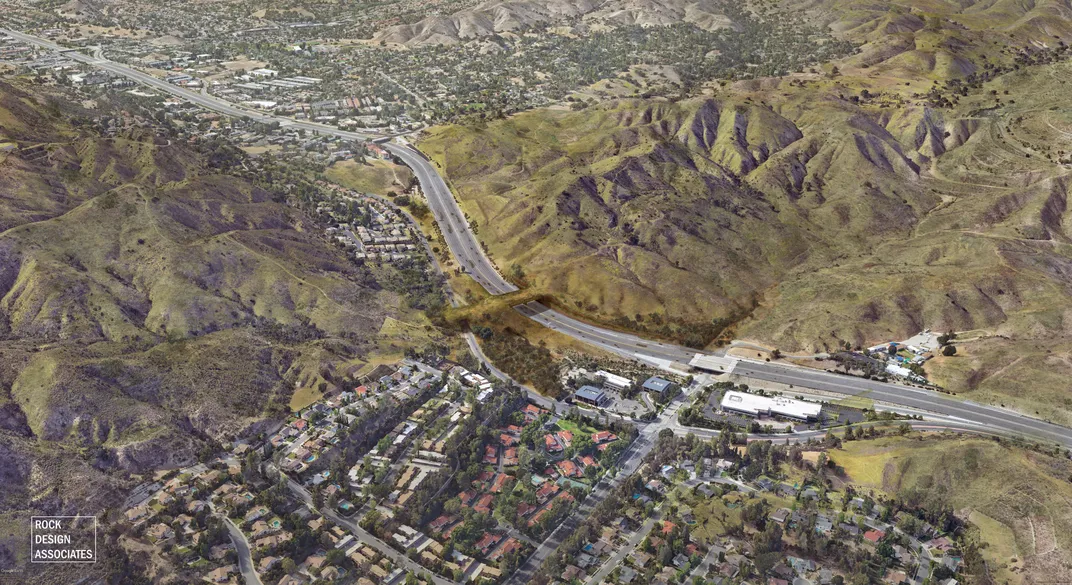[social_warfare]
California’s Groundbreaking Wildlife Crossing: A Bold Step Towards Conservation
In the bustling expanse of Los Angeles County, a pioneering initiative is taking shape above the relentless traffic of Highway 101. The plan is to develop the world’s largest wildlife crossing.
The Wallis Annenberg Wildlife Crossing, slated for completion in 2025, represents not just an engineering marvel but a beacon of hope for wildlife conservation.
Spanning 210 feet, this bridge is poised to be the world’s largest of its kind, designed specifically to safeguard a diverse array of animals—from majestic mountain lions to discreet deer and even the tiniest ants—enabling them to safely traverse between the Santa Monica Mountains and the Simi Hills.
The need for such a crossing has become increasingly urgent. America’s roads are perilous for wildlife, with over one million wildlife-vehicle collisions annually causing not only animal casualties but also human fatalities and injuries. This bridge aims to mitigate these incidents by offering safe passage above eight lanes of hectic traffic, thereby preventing the dangerous attempts by animals to cross busy roadways.
The project, with a hefty tag of $92 million, is a testament to the power of collaboration. Funded through a public-private partnership that includes Caltrans, the National Park Service, and the National Wildlife Federation, the crossing is a bold statement in ecological intervention.
Groundbreaking began on Earth Day two years ago, marking a significant step forward in environmental stewardship.

Structurally, the crossing is as robust as it is ambitious. Over the coming months, crews will install more than 80 concrete girders, each weighing up to 140 tons. Once completed, the bridge will not only serve its functional purpose but will also be a habitat in itself, draped in over a million native plants and additional greenery to mimic the natural environments of the crossing wildlife.
One cannot overlook the poignant narrative of P-22, the mountain lion whose life and struggles have come to symbolize the plight of urban wildlife. Born around 2010, P-22’s journey across two major freeways to Griffith Park highlighted the severe challenges faced by animals due to urban sprawl.
His subsequent health issues and untimely death in December after a series of unfortunate events underscore the critical need for solutions like the wildlife crossing. P-22’s legacy is thus immortalized, inspiring not just donations but a wider awareness and commitment to wildlife conservation.

This crossing does more than bridge two physical locations; it connects us with a larger story of survival and adaptation. It forces us to reckon with the impact of our urban environments on the natural world. By weaving natural landscapes into our urban fabric, projects like the Annenberg Crossing guide us toward a more harmonious coexistence with nature.
Experts believe that without such interventions, the genetic diversity of local wildlife populations, particularly mountain lions, could deteriorate to the point of local extinction. The bridge is thus a critical step in preserving these populations for future generations.
As we anticipate the completion of this monumental project, it’s clear that the Wallis Annenberg Wildlife Crossing is more than just a pathway over a freeway—it is a lifeline, a new hope for wildlife conservation in urban settings.
